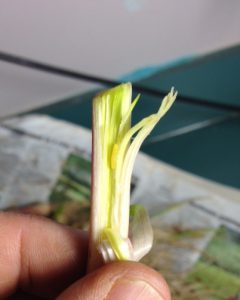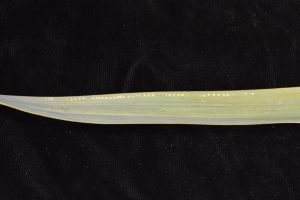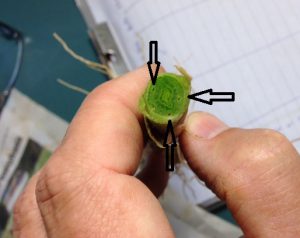Allium Leaf Miner
Allium leaf miner (ALM) traps (sticky cards) were deployed on March 20, in overwintered allium crops at sites in Lawrenceville and Pennington (Mercer County), and Milford, Pittstown and Asbury (Hunterdon County). These traps have been checked weekly since that time and have returned no positive ALM catches. Host crops at these sites (chive, scallion and garlic) were free of injury as of April 5. In 2017, traps placed at these locations were already catching ALM adults by the end of March, and feeding injury was easily discovered on chives. Indications are that we are 2-3 weeks behind last year’s development.
We do have confirmed injury and sighting of adult ALM on scallions in high tunnel production in the Pennington area, but insect development in this warmer protected environment is not indicative of what is occurring outdoors. As weather warms, expect adults to emerge and become active. They will feed on available allium crops, which will include overwintered chives and garlic as well as newly transplanted onions and scallions and leeks. Look for characteristic dots (see photo at center) on the upper portion of upright leaves. Expect that any plant with these feeding/egg laying scars is infested. Larvae will tunnel downward (see photo at right); ultimately pupating in the neck of the plant (see late instar larva at left).
Floating row covers, kept on until the first flight ends will help minimize access to plants. Insecticide applications targeting adults may be helpful as well, although frequency of applications is uncertain. Spinosyn materials (Radiant, Entrust (OMRI approved)), pyrethroids (Mustang Maxx, Warrior), and pyrethrin materials (Pyganic (OMRI approved)), neonicotinoids (Scorpion, Venom) and the insect growth regulator Trigard are labeled for miner control.
Adult activity and observations of feeding will be reported on in the IPM Update as they occur. We will attempt to identify the beginning and end of the first flight so that growers know when they should initiate control tactics and when the risk of infestation has abated.




